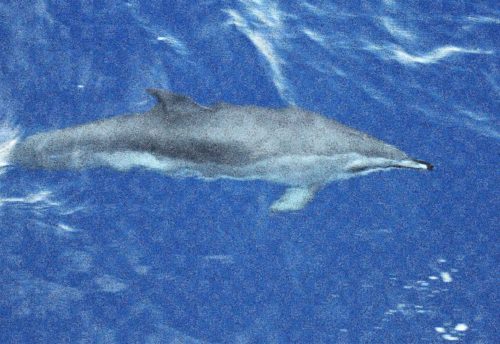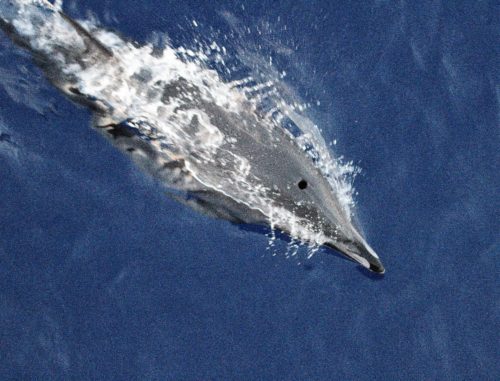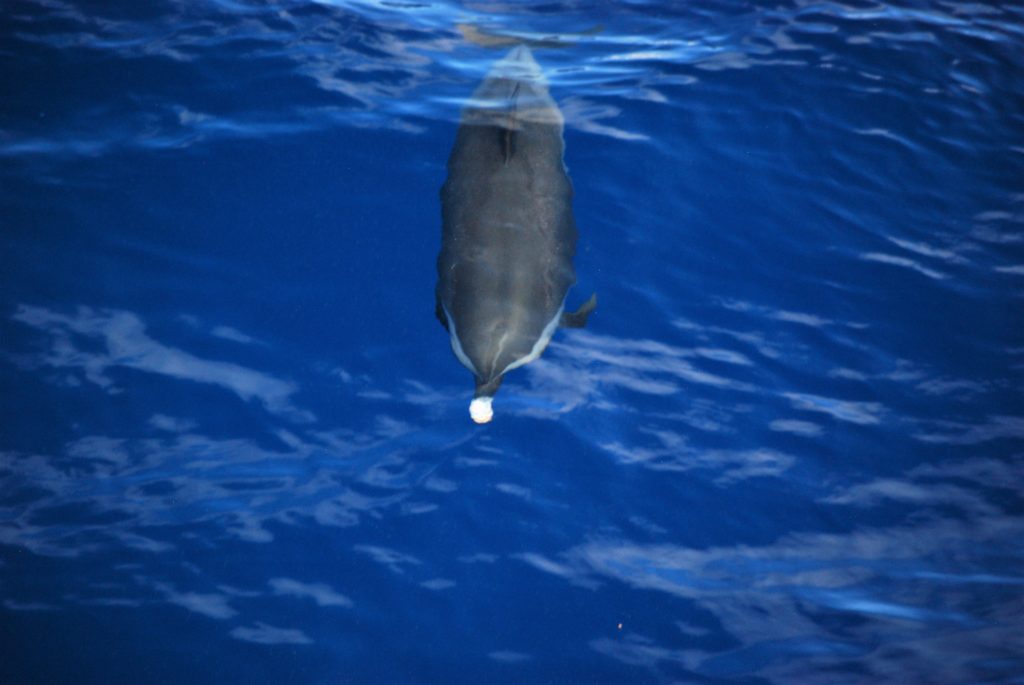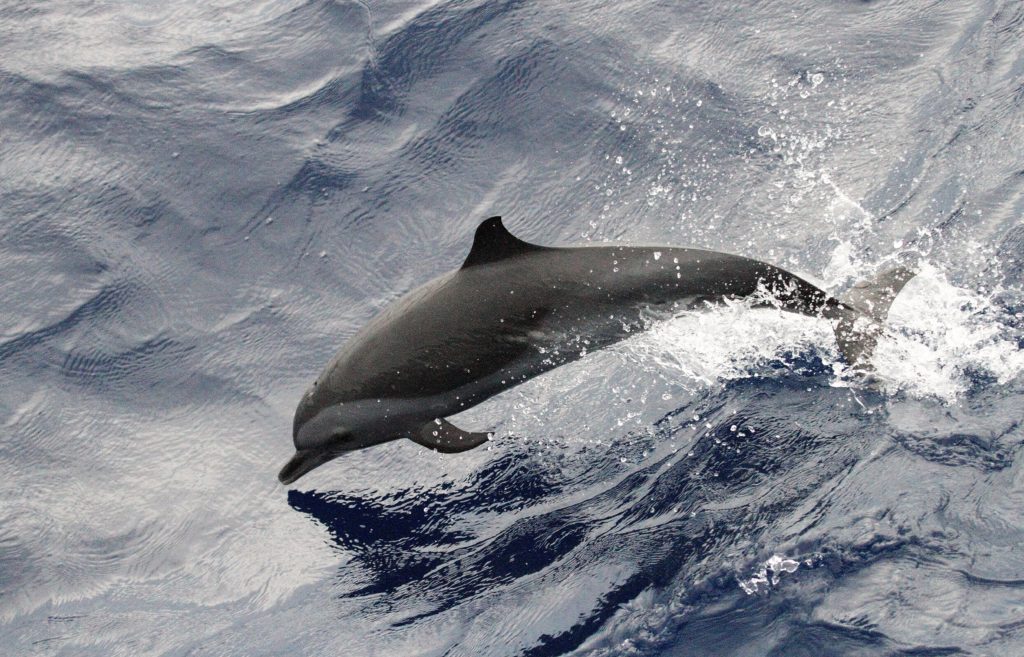June 10-12, 2017
Written by: Alexandria Hahn
Edited by: Amy Whitt
In the early hours of Saturday morning, I was asleep and I wish that I hadn’t been! The few scientists and crew members who were awake witnessed around five Clymene dolphins riding the bow of our ship. I had been told that it was very possible to see dolphins exhibiting this behavior at sea…but I was asleep!
Luckily, several of those who got to see them were able to snap some photos. Chris, one of our acousticians (someone who analyzes the marine mammal sounds we record), got some amazing photos that we were able to use to identify which dolphin species they were. Upon first look, I thought for sure that they were pantropical spotted dolphins, which are very abundant in the Gulf of Mexico and known to ride the bow waves of ships. However, after Amy got the chance to see the photos, she concluded that they were Clymene dolphins. I felt so stupid having called it wrong, but Amy assured me that it is easy to get them confused when looking at them generally. It is mostly their distinct dark “moustache” that allows us to distinguish them from pantropical spotted and other similar dolphin species.


From Saturday night into Sunday morning, we started to experience some bad weather. This was to be expected, so when we saw that the sea state was a Beaufort 5 (meaning that the seas were choppy with lots of white caps which look like white horses running) and that the swell was sitting between 5 and 6 feet high, we decided to stop visual observations for marine mammals. While we were “off effort”, we made sure to regularly check the sea state in case it improved, but it kept deteriorating throughout the day.
As disappointing as it was to have to take a day off from searching for mammals, Monday came as a nice surprise as the weather improved. It started off slow, but around midday, Danielle (another marine mammal observer) and I got a sighting. This one was even more exciting than the ones before because it was only about 100 meters (~330 feet) off the ship! It was a single sperm whale that surfaced to breathe only two or three times and then disappeared under the water’s surface. Sadly, only a few of us saw this whale, but that would change a little later.
Later in the afternoon, we had another sperm whale sighting! This time there were five to six whales, and one was definitely a calf. These were relatively close to the ship, so we could see their dorsal humps with the naked eye, and I was able to get some good videos of their blows. These whales stayed at the surface for a while, so everyone was able to see them. It was extraordinary to me to be able to see them so close and in such detail. It was definitely one of the best things I’ve ever seen!
Once the excitement over this whale sighting died down, we all met in the galley (where we eat and hang out) for a science team meeting, but I got permission to stay on watch for mammals because the acousticians were hearing dolphin whistles close to the towed hydrophone array. It was only about 10 minutes into the meeting when I saw the dolphins leaping towards the ship. It was the most beautiful thing I’ve ever seen!


From a distance, they appeared to be tiny, and as they approached the ship to bow ride, I thought that they still looked pretty small…about 5 feet long maybe. Of course, I was already used to seeing sperm whales which are much bigger at 40 to 60 feet long. I went crazy on the radio to alert others to this sighting. Amy urged me to identify the species of dolphin before anyone gave it away, so I started to look for the characteristics right away. They had a longer rostrum with a prominent white tip, and some of them had spots on their bodies. On the sides of their bodies, I could see that they appeared to have a cape and no spinal blaze. After looking at all of these features, I concluded that we were seeing pantropical spotted dolphins. Amy said I was right! They hung out with us for about 20 minutes before deciding to move on. I decided that THIS was the coolest thing ever. That closed out our sightings for the day, and I’d say it was definitely a successful day for the mammal team!
***This blog article is part of our LADC-GEMM 2017 Survey blog series. Check out more articles in this series here, on the LADC-GEMM website, and on Alexandria Hahn’s blog. Also, be sure to “Like” the new LADC-GEMM Facebook page!***

